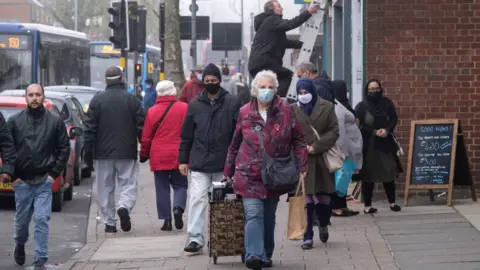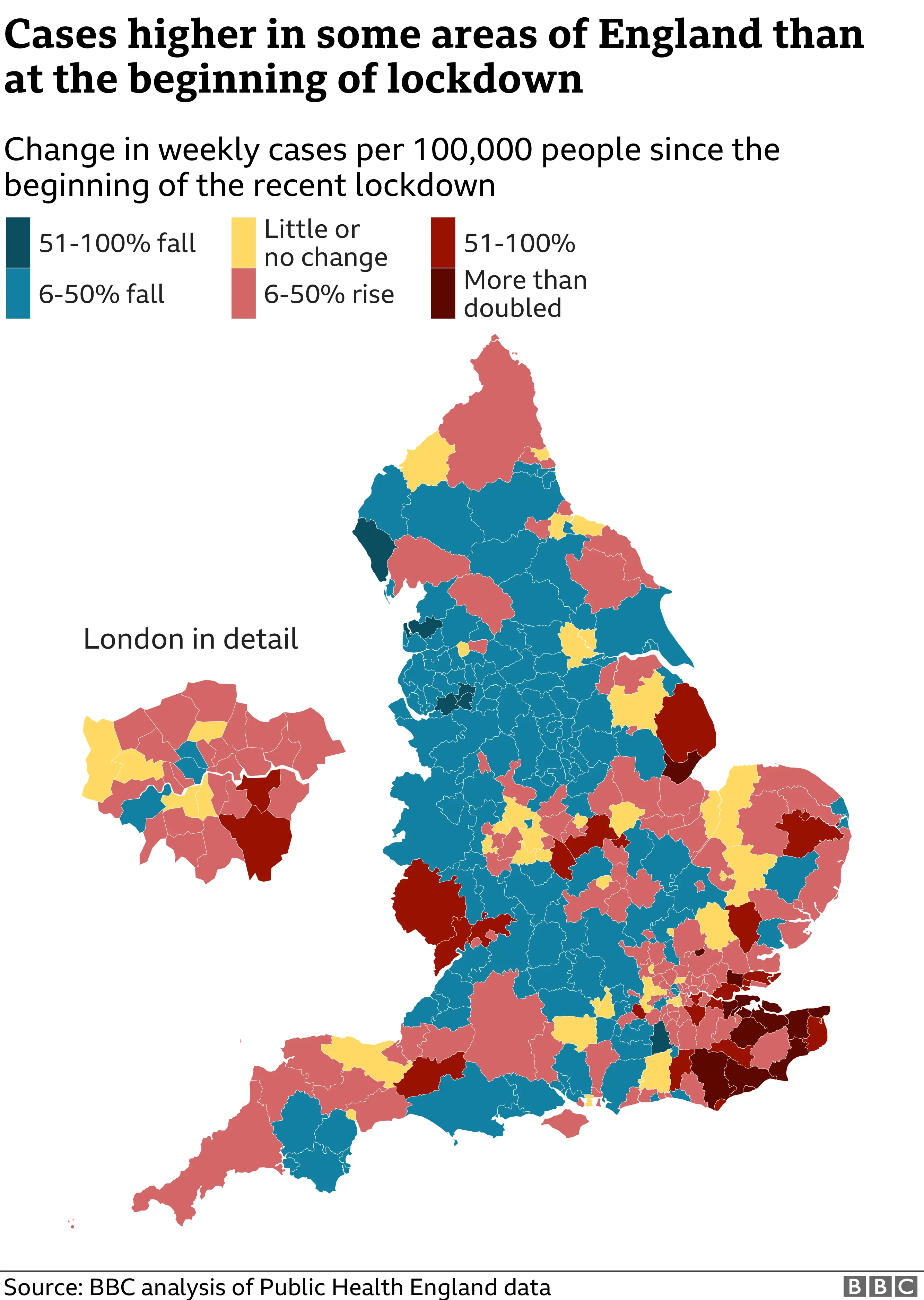Coronavirus infections levelling during England lockdown
 Getty Images
Getty ImagesCoronavirus infection rates in England are continuing to show signs of levelling off - but the picture across the UK is mixed, according to data from the Office for National Statistics.
In Wales and Northern Ireland, infections have been decreasing in recent weeks - but in Scotland, they seem to be rising.
After lockdown ends in England, most areas face tougher tier restrictions.
In Scotland, Wales and Northern Ireland the devolved administrations have the power to set their own coronavirus regulations, though all four UK nations have agreed a joint plan for Christmas.
In England, decisions on post-lockdown tiers are based on how fast case rates are falling or rising in different areas, as well as numbers affected in the over-60s.
'Infected before lockdown'
With the second lockdown having started on 5 November, Prof Kevin McConway, statistics expert from the Open University, says it might seem disappointing that progress to reduce infections hadn't been faster.
"People continue to give positive test results, on average, for at least 10 days after they were first infected, so some of the people who tested positive in the most recent week would have been infected before the English lockdown began," he said.
The ONS figures are based on thousands of people tested for the virus in households across the UK, whether they have symptoms or not.
Of those tested in the week to 21 November, one person tested positive out of every:
- 85 in England
- 115 in Scotland
- 145 in Northern Ireland
- 185 in Wales
According to the ONS estimates, rates in England increased in the East Midlands and North East that week, while continuing to fall in the North West.
In the east of England, London, the South East and South West, rates now appear to be decreasing too.
The areas with the highest number of people infected per head of population are Yorkshire and the Humber, the North West and North East.
Secondary-school-age children and young adults are seeing the highest infection rates.
This information is based on a relatively small number of people testing positive in each age group and region, so there is a wide margin for error.

- LOCKDOWN LOOK-UP: The rules in your area
- THREE TIERS: How will the system work?
- TESTING: How do I get a virus test?
- THE R NUMBER: What it means and why it matters
- LOCAL LOCKDOWNS: What happens if you have one?
- TEST AND TRACE: How does it work?

In Scotland, an estimated 45,700 people had the virus in the week to 21 November - one person in every 115, up from one in 155 the previous week.
But the ONS says the results are based on modelling and "should be interpreted with caution".
The ONS figures are one source of data which helps the government's scientific advisers estimate the reproduction (R) number of the virus every week.
Another source is the Covid symptom study app, which suggests there has been a fall in new UK daily symptomatic cases - from 34,279 to 29,311 - over the two weeks up to 22 November.
This estimate is based on one million people using the app every week.

Data from Public Health England shows rates of coronavirus cases are still rising in 45% of areas (shown as pink, red or dark red in the map), despite the second lockdown.
However Dr Yvonne Doyle, PHE medical director, says "there is now reason for hope".
"Case rates have fallen across every age range and in all regions, and positivity in both pillars [NHS and community testing] has also decreased. Over time we can expect that to lead to fewer hospitalisations and deaths.
"The huge efforts people have made over the past few weeks are starting to pay off," Dr Doyle said.
The government's daily figures for confirmed UK cases of coronavirus are often much lower than the ONS numbers because they only count people with symptoms testing positive.
On Thursday, the government reported that 17,555 people tested positive and 498 people had died within 28 days of a positive test.
Over the past week, that's a 25% reduction in cases. The number of patients admitted to hospital is also falling - but deaths continue to rise.